Coffee Bean Harvesting and Processing
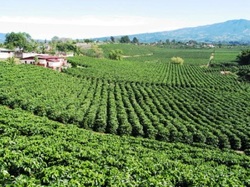
Coffee grows in climates in latitudes between the Tropics of Capricorn and Cancer.
Coffee is grown on plants or bushes typically in rows to assist harvesting.
Coffee is grown on plants or bushes typically in rows to assist harvesting.
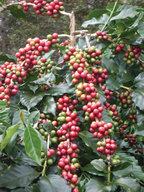
Coffee berries when ripe are called cherries.
This coffee plant has cherries ready for hand picking. Mature coffee cherries can be red, yellow and orange in pigmentation.
This coffee plant has cherries ready for hand picking. Mature coffee cherries can be red, yellow and orange in pigmentation.
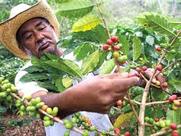
The berries need to be individually harvested as they do not ripen all at the same time.
Harvesting is a very labor intensive process and usually picked by hand. Some modern farms use machinery.
Harvesting is a very labor intensive process and usually picked by hand. Some modern farms use machinery.
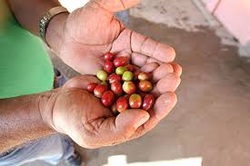
A handful of coffee cherries.
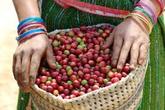
The coffee cherries are placed into a basket for collection to be later sacked and transported to the mill.
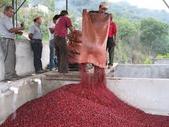
Coffee cherries from the plantation are being gathered in preparation for washing.
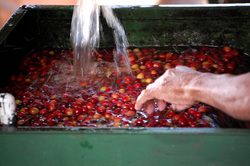
The ripe coffee cherries are sorted and unripe or defective ones are picked out.
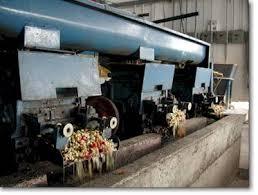
In the WET PROCESS, the fruit or pulp covering the seeds/beans is removed before they are dried. Coffee cherries processed by the wet method require special equipment and with the use of friction, fermentation and substantial amounts of water. Usually within hours of the harvest, the cherries are pulped to extract the coffee beans. The skin of the cherry and some of the pulp is removed by pressing the fruit by machine in water through a screen. The bean will still have a pulp clinging to it so it is removed by the classic ferment-and-wash method or newer procedures called machine-assisted wet processing using aquapulping or mechanical demucilaging.
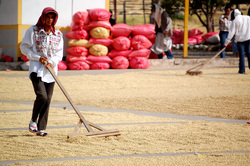
The DRY PROCESS, also known as unwashed or natural coffee, is the oldest method of processing coffee. After harvest, the coffee cherry is first cleaned and then placed under the sun to dry naturally on tables or trays or on patios spread out in thin layers.
It may take up to 4 weeks before the cherries are dried to the optimum moisture content depending on the weather conditions.
It may take up to 4 weeks before the cherries are dried to the optimum moisture content depending on the weather conditions.
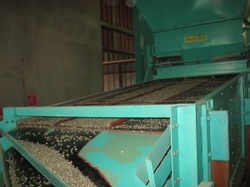
All the outer layers of the dried cherry are removed in one step by the hulling machine.
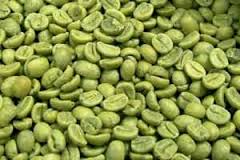
Beautiful dried and cleaned green coffee beans are now ready for roasting.
